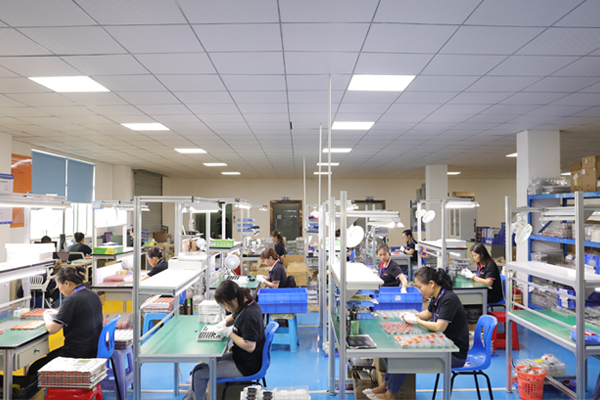15 years one-stop China custom CNC machining parts factory

Hey there I’m VMT Sam!
With 25 years of CNC machining experience we are committed to helping clients overcome 10000 complex part-processing challenges all to contribute to a better life through intelligent manufacturing. Contact us now
 174 |
Published by VMT at Feb 17 2024
174 |
Published by VMT at Feb 17 2024
Introduction:
In the manufacturing industry, CNC machined parts find widespread applications across various sectors owing to their high precision and complexity. Surface treatment, being a crucial aspect of the CNC machining process, significantly influences the performance and appearance of these parts. This article delves into the implementation of effective quality inspection strategies to ensure the quality of CNC machined parts after surface treatment.

I. The Necessity of Quality Inspection:
The quality of surface treatment for CNC machined parts directly impacts product performance, lifespan, and aesthetics. Rigorous quality inspection helps identify potential issues in the surface treatment process, such as uneven coating, peeling, or scratches, preventing the occurrence of non-conforming products. This, in turn, reduces the risks associated with returns or rework due to surface quality issues, ensuring the smooth progression of the production process.

II. Key Aspects of Quality Inspection:
Visual Inspection:
Utilize visual or optical microscopy to examine the surface for apparent defects like scratches, peeling, or color variations.
Roughness Inspection:
Measure surface roughness using a roughness gauge to evaluate surface texture and microstructure.
Thickness Inspection:
Employ a coating thickness gauge to measure coating thickness, ensuring adherence to design requirements.
Hardness Inspection:
Conduct hardness tests using a hardness testing machine to assess coating hardness for adequate wear resistance and impact resistance.
Adhesion Inspection:
Evaluate the adhesion between the coating and substrate material, detecting any potential delamination.
Corrosion Resistance Inspection:
Assess surface corrosion resistance through methods such as salt spray tests and immersion tests.
Environmental Adaptability Inspection:
Simulate actual usage conditions to examine part performance under temperature, humidity, and light exposure.

III. Implementation Guidelines for Quality Inspection:
Developing Inspection Plans:
Formulate detailed quality inspection plans based on part characteristics and surface treatment requirements, specifying inspection items, methods, and acceptance criteria.
Selecting Appropriate Inspection Equipment:
Choose high-precision and reliable inspection equipment based on inspection needs to ensure accurate and reliable data.
Training Inspection Personnel:
Provide professional training for inspection personnel to ensure they possess the necessary skills and knowledge for accurate quality assessment.
Regular Calibration and Maintenance:
Perform regular calibration and maintenance of inspection equipment to ensure it is in good working condition, enhancing the accuracy of inspection results.
Data Recording and Analysis:
Thoroughly record inspection data and conduct regular data analysis and trend forecasting to promptly identify potential issues and take corresponding measures.
Continuous Improvement:
Continuously optimize surface treatment processes and improve quality inspection methods based on inspection results and market feedback to enhance product quality and competitiveness.
IV. Post-Sale Issues and Complaint Handling:
In addressing post-sale issues and complaints for CNC machining manufacturers, conduct in-depth analyses to identify the root causes. This may involve quality control issues in the surface treatment process, raw material problems, or other issues in the production process. Effective handling of post-sale issues and complaints can further improve production processes, elevate product quality, and enhance customer satisfaction.
V. Conclusion:
Quality inspection after the surface treatment of CNC machined parts is a critical aspect of ensuring product quality. Strict control over surface quality effectively enhances product performance and lifespan. When implementing quality inspection, attention should be given to various details, including the formulation of detailed inspection plans, the selection of suitable inspection equipment, professional personnel training, and regular maintenance and calibration. Additionally, addressing post-sale issues and complaints is a crucial avenue for continuous improvement. By continually optimizing production processes and strengthening quality control, overall quality levels of CNC machined parts can be elevated, providing robust assurance for market competitiveness.
Ready To Start Your Next Project?
Get Instant Quote

Request a Free Quote
Send us a message if you have any questions or request a quote. We will get back to you ASAP!